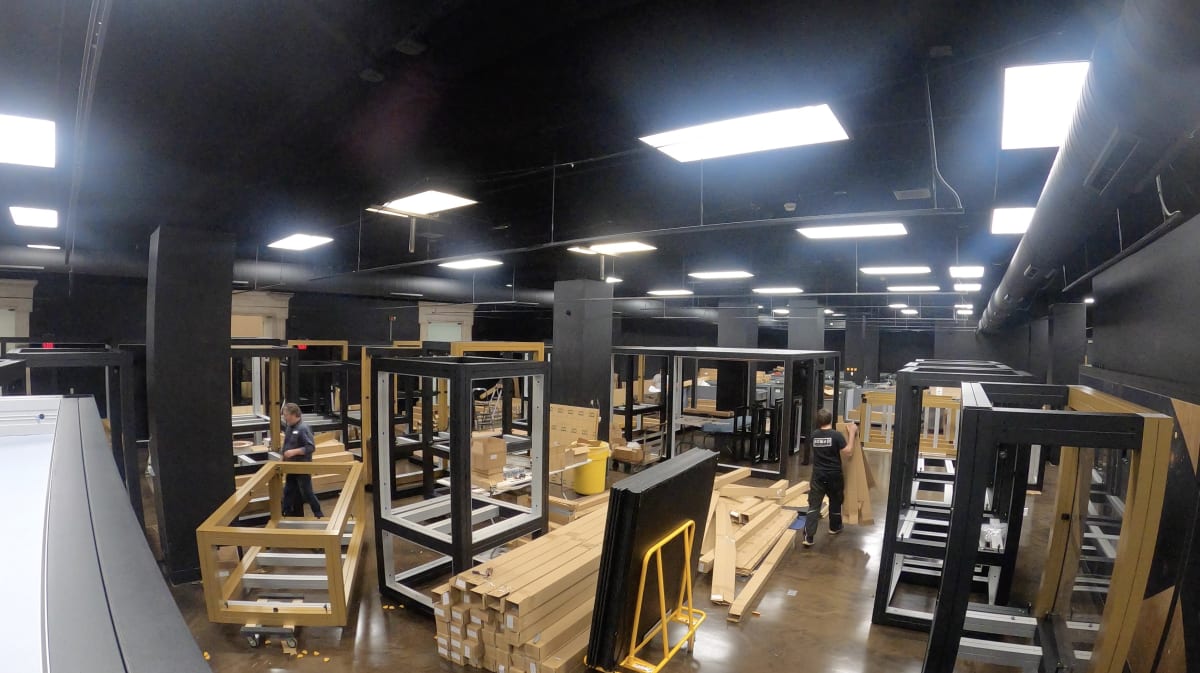How can the environmental impacts of touring be reduced?
Touring exhibitions bring immense cultural benefits to audiences throughout the world and facilitate an international network of shared heritage and knowledge that enriches lives and extends the reach of cultural organisations beyond their own borders. But a global reach comes at an environmental cost, and it is imperative that exhibition originators and producers understand that cost, and the ways in which this impact can be effectively reduced.
There are many ways that touring exhibitions can be produced and managed, from the loan of collections where exhibition setworks are constructed locally by the host, to fully built exhibitions that incorporate all the components that a host would need to open the doors to the public, and many variants in between.
It may seem that touring the minimum amount of setwork is the better option for the planet, but this may not be the case, as setwork built locally for temporary installations are more likely to involve large amounts of landfill waste. Conversely, a touring exhibition can be designed to be reused again and again.
There are many factors to consider when creating a more sustainable touring exhibition, and only through addressing all these factors can an exhibition really be classified as one produced on sustainable principles, let alone one that might be justifiably provided with a carbon-neutral label.
Effective sustainable design involves a thorough reconsideration of every part of an exhibition’s production journey through briefing, design, production, touring, and disposal, and across which high environmental risks should be measured and mitigated including waste (both during a tour and at end of a tour), touring volume and weight, personnel attendance, and disposal at end of life.
Exhibition design and production should be developed with a goal to reduce waste through use of reusable and robust modular components and with recyclable material selection that ensures tours can be operated on a zero waste and zero landfill basis throughout their lifetime. A modular approach also allows exhibitions to pack into smaller volumes and at lighter weights, so touring logistics have a reduced climate impact, and require smaller teams of technicians to install them.
At the end of an exhibition tour, it is essential that all components that have reached the end of their life are reused or recycled: the exhibition has been designed for this, so all these procedures are pre-planned. The modular design approach, and the inherent robustness of materials used, ensures that exhibition producers can continue to reuse components in new productions many times over.
Effective actions
Design
- Consider a modular approach
- Use durable materials and finishes
- Integrate adaptability (for language changes for example)
- Consider how components will pack into crates
Production
-
Use materials that are recycled or can be recycled
-
Do not use materials that would need to be sent to landfill
-
Reduce the volume of materials that need to be replaced
-
Build in low energy systems for lighting and AV
-
Keep records of all supply chain carbon footprints
Touring
-
Reduce volumes of crates
-
Reduce weight of materials
-
Build crates in standard sizes to allow reuse
-
Avoid airfreight wherever possible
-
Reduce travel of technical crew and couriers
-
Maintain a carbon footprint audit throughout tour period
Disposal
-
Reuse materials wherever possible
-
Recycle anything that cannot be reused
-
Take responsibility for all materials at end of life
-
Conduct a final carbon audit at end of exhibition life

